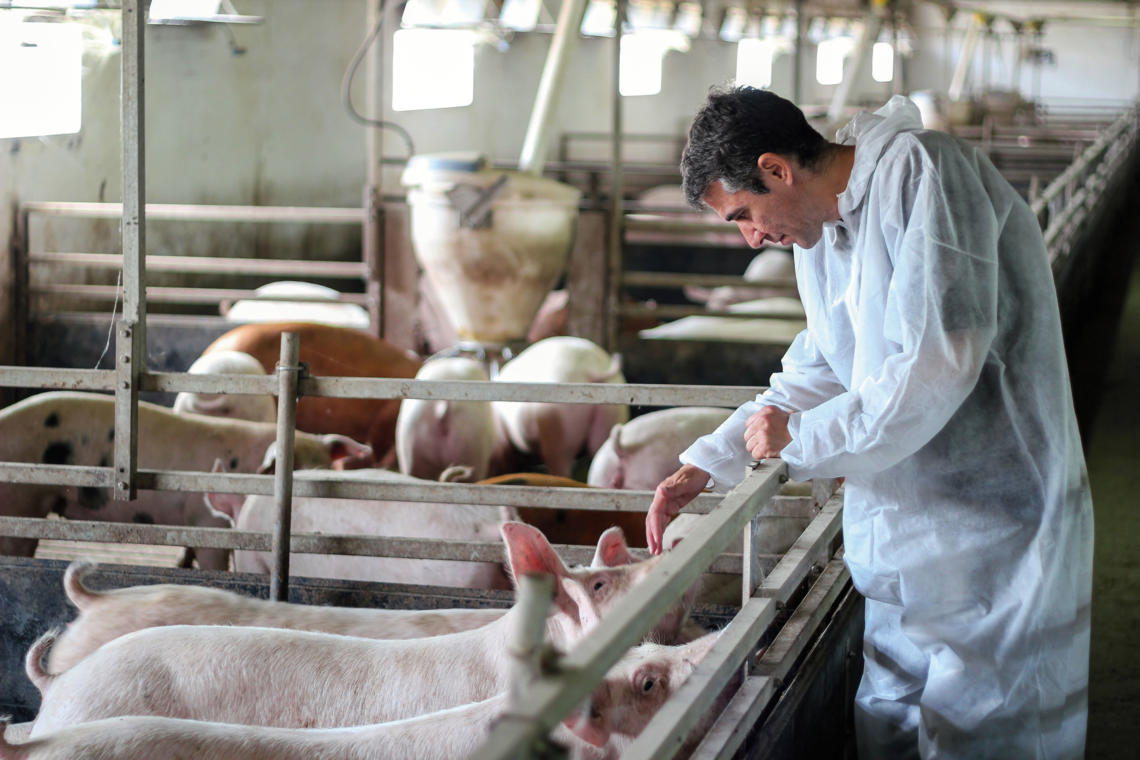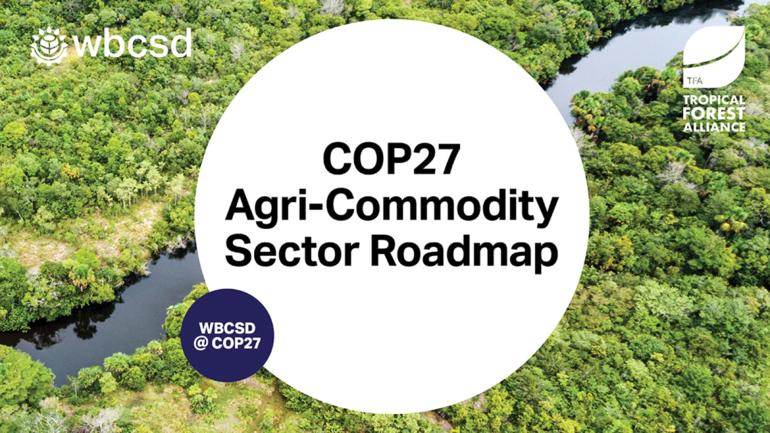Despite the fact we need food to survive, the agriculture and food sectors can seem at odds with an increasing global drive for sustainability. They impact on several planetary sustainability boundaries, the most concerning of which include nitrogen and phosphorous flows, loss of biodiversity, water consumption, and greenhouse gas emissions.
At the 2019 EAT Forum, Johan Rockström and Jessica Fanzo described the science behind the EAT Lancet Report 2019 on Food in the Anthropocene, with all its limitations. It is seen as starting an important dialogue for a more sustainable food system based on quantitative scenarios. You can see more on YouTube.
Feed industry factors
Nitrogen and phosphorous flows originate, to a very large extent, from the agriculture and food sector. This is because the reactive nitrogen from fertilizer and microbial sources, as well as phosphate salts from mineral origin, are poorly converted across all stages of the food system; from crop production to human consumption. The vast majority is emitted to the environment, causing significant environmental and health issues.
Biodiversity is reduced by agriculture through intensive monoculture of crops, livestock production drawing on a significant part of terrestrially produced feed materials, land use change to produce crops and feed, and the resultant loss of habitats.
Several global breadbaskets – delivering the energy crops for food, feed, and biofuels – are already dealing with water scarcity and are affected by a higher frequency of severe weather events that come with climate change.
Greenhouse gas emissions originate mostly from the deforestation that occurs to produce protein and oil crops for feed and food purposes. The use of fossil energy for fertilizer production and to process, store and transport food from ‘farm to fork’ also contribute. In addition, nitrous oxide (from reactive nitrogen emissions) and methane (from the anaerobic conversion of carbon sources in animals and during manure storage) are significant contributors to greenhouse gases emissions.
Protein is a significant factor
Protein sources in the human diet – especially some red meat systems and some nuts, almonds and pulses – draw especially heavily on arable land and water resources. They also have a high nitrogen fixation footprint. Additionally, in many countries, the average consumption of animal-based protein sources is far above the recommended daily intake. This contributes to the burden of non-communicable diseases. Therefore, protein sources are at the center of the discussion around more sustainable food systems. Substituting animal-based protein with plant-based protein sources, accompanied by a reduction of food loss and waste, and lower environmental impacts in agriculture production, is at the core of the recommendations to bring the agriculture and food system back into the safe operating space.
According to our estimations, currently over 60 million metric tons of protein (measured as protein dry matter, to compare the different products) in the form of aquaculture fish, eggs, chicken, pork, beef and dairy products are produced annually from intensive agriculture (not accounting for subsistence and backyard farming). This is accompanied by approximately 12 million metric tons of proteins from pulses and soy foods.
The retail value of fresh, frozen and processed animal-based products in retail and food service we approximate at USD $4,000 bn globally, that is about 30% of annual global food and beverage retail value.
Plant-based meat substitutes
Plant-based meat substitutes are a vibrant development with many new players entering the market with innovative product formulations. Plant-based substitutes contain approximately 20% specific plant-based proteins to mimic texture and nutritional value of meat, with some additional but important formulation ingredients to ensure the required color and taste. Both meat and the substitutes contain approximately 10% fat and 65% water.
The total market value for plant-based meat substitutes we anticipate to exceed USD $100 bn by 2030, growing from a market of approximately USD $2 bn in 2018. This would be a compound annual growth rate (CAGR) of 40% over 12 years, which is very ambitious. This is especially the case when you consider that the market needs investment and that the high texture, taste, and nutritional requirements for suitable plant-protein ingredients will be impacted by supply limitations. If we assume a price for these products in 2030 of approximately USD $10 per kg product, this would result in 2 million metric tons of protein (dry basis) being available for consumption by 2030.
Even with very optimistic growth rates for these new products entering the market, the impact on the overall global protein levels in 2030 will be negligible, compared to the consumption of animal-based protein sources and conventional plant-based protein sources. So producers of plant-based meat substitutes have a long way to go before they can replace meat at any significant global scale, despite very likely being set up for an exceptional success story.
To reduce the environmental impact of the food system, the focus must be on reducing the footprint of animal-based protein
In order to move some of our planetary boundaries back into the sustainable operating zone, we have tried to identify the areas of highest impact for potential business solutions. Even the most recent publications which are constructing scenarios for a more sustainable food system do not have all the necessary expertise in species, farming systems and feed compositions to give guidance to business. This includes W. Willet, J. Rockström et al., Food in the Anthropocene: The EAT-Lancet Commission on healthy diets for sustainable food systems, The Lancet, 2019; M. Springman et al., Options for keeping the food systems within environmental limits, Nature, 2018; J. Ranganathan et al., Shifting diets for a sustainable food future, World Resource Institute, 2016.
Additionally, even models acknowledging the large impact of farm management practices (see this link), are all based on 2010 data, which do not reflect the efforts that the industry has undertaken over the past nearly 10 years to reduce its environmental impact, nor do they consider other environmental impacts beyond greenhouse gas emissions.
Working together
To help meet this challenge, we have joined with other leading global businesses in the Protein Working Group of the World Business Council for Sustainable Development (WBCSD) Food and Nature Program. Together we will take a journey towards a better understanding of the sustainability impacts of protein sources and the areas of highest impact for business solutions. As a starting point, we gather data for the current market reference for plant and animal-based protein sources from the bottom up. We consider different agricultural and feeding practices for the different protein sources in different regions of the world. This is work in progress and will be refined further as more business share their observations and we interact more with the scientific community to validate these observations with regionalized food system models.
But even the first very rough estimation sends out a clear message about priority areas to reduce the environmental impact of protein nutrition. So far, we approximate animal and aquaculture-based food consumption contributing to:
- Approximately 100 million tons of annual nitrogen fixation via chemical and microbial processes out of approximately 200 million tons of annual fixation for all agricultural food production taking into account current fertilizer use and microbial fixation of agriculture crops. The EAT-Lancet commission proposes a planetary boundary of 90 to 130 million metric tons for food production to maintain in a safe operating space of nitrogen run-off and still feed 10 bn people.
- Approximately 7 million tons of annual phosphorous intake from phosphate rock of the total intake of 18 million mt for all agricultural food production. The EAT-Lancet Commission proposes a planetary boundary between 6 and 12 million metric tons to feed 10 bn people, largely depending on our ability to recycle phosphate for fertilizer from animal manure and municipal waste.
- Approximately 400 million hectares (ha) arable land for feed production out of 1,500 million ha globally available arable land.
- Approximately 3.5 Giga Tons (Gt) CO2 equivalent (CO2e) in greenhouse gas emission. In the EAT Lancet report we find estimations for total greenhouse gas emissions from global food production between 8.5 and 13.7 Gt. This number includes land use change effects between 2.2 and 6.6 Gt greenhouse gas emissions. It is fair to conclude that protein sources in our diets have a significant contribution to the 49 Gt CO2e global, annual, anthropogenic greenhouse gas emissions, but statements about “meat heating up the planet” seem somewhat exaggerated.
Despite all the scientific debate around the right numbers and the right underlying assumptions, it is obvious, that animal-based products take a center stage position for a more sustainable food system and that any business solution, claiming an impact, will have to account for the many region-, animal-, feeding-system-specific aspects.
To make things more complicated, animal welfare will need to be addressed properly and trade-offs with resource efficiency need to be managed.
Additionally, we need a strong reduction of antibiotic use in livestock, which will set further constraints for livestock management and feeding practices.
Moreover, all of this needs to happen in a way that makes farming attractive to young, talented people and supports viable rural communities.
So, there’s a lot to learn about when it comes to business innovation with impact.
Transformation required
WBCSD has brought companies from the food and agriculture sector together to help address the challenges of staying within the planetary boundaries, and the need to satisfy the nutritional requirements of our growing global population.
Projects in its Food & Nature Program develop and disseminate solutions for healthy people and a healthy planet, addressing Nutrition & Health, Livelihoods & Human Rights, Biodiversity & Ecosystems, and Climate Resilience & Greenhouse Gas Mitigation in a dialogue between businesses and civil society across the agriculture and food space. The goal is to identify business solution areas that will lead the necessary transformation with a well-balanced trade-off between different environmental and social sustainability criteria, agreed upon between different stakeholders from farm to fork.
Agricultural production systems must be transformed to be more resource efficient, support biodiversity, reduce negative health outcomes, and be economically viable to ensure sustainable development of rural communities.
This article is written by Ralf Kelle, Vice President Sustainable Development at Evonik








